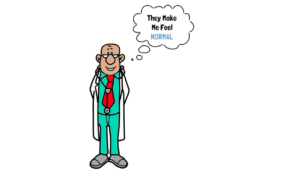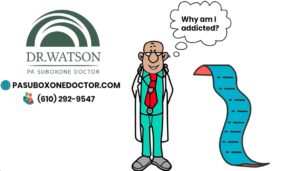The Science Behind Suboxone®: How It Works in the Brain
Welcome to the PA Suboxone® Doctor blog, your trusted source for information on medication-assisted treatment (MAT) and its effectiveness in combating opioid addiction. In this comprehensive blog post, we will delve into the science behind Suboxone®, exploring its mechanism of action in the brain and how it supports individuals on their path to recovery.
Understanding Addiction and Its Impact on the Brain
To fully grasp the significance of Suboxone® and MAT, it is crucial to understand the impact of addiction on the brain. Opioids bind to specific receptors in the brain, triggering a surge of dopamine and creating intense feelings of pleasure and euphoria. Over time, the brain becomes dependent on opioids to maintain a sense of balance, leading to addiction. The reward system is hijacked, and the brain undergoes significant changes, affecting decision-making, behavior, and overall well-being.
Suboxone®: A Powerful Medication-Assisted Treatment Tool
Suboxone® is a medication that combines two key ingredients: buprenorphine and naloxone. Buprenorphine, a partial opioid agonist, binds to the same receptors as opioids but produces milder effects. It helps reduce cravings and withdrawal symptoms, enabling individuals to focus on their recovery without experiencing the intense highs and lows associated with opioid use. Naloxone, an opioid receptor antagonist, blocks the effects of opioids, acting as a deterrent to misuse.
The Mechanism of Action of Suboxone®
When Suboxone® is administered, the buprenorphine component binds to opioid receptors in the brain. Due to its partial agonist properties, it activates these receptors but to a lesser extent compared to full agonists like heroin or oxycodone. This activation stabilizes brain function and reduces withdrawal symptoms, allowing individuals to regain control over their lives. Additionally, the presence of naloxone discourages misuse by blocking the effects of opioids if Suboxone® is taken in higher doses or injected.
The Role of Sublocade® in Medication-Assisted Treatment
In addition to Suboxone®, Sublocade® is an essential tool in MAT. It is a monthly injectable formulation of buprenorphine that provides sustained release over several weeks. Sublocade® eliminates the need for daily medication administration and ensures a consistent therapeutic effect, promoting medication adherence and minimizing the risk of relapse. Its long-acting nature provides stability, allowing individuals to focus on other aspects of their recovery.
Safety and Side Effects of Suboxone®
Like any medication, Suboxone® carries potential side effects. Common side effects include constipation, nausea, headache, and insomnia. However, these effects are generally mild and diminish over time. It is crucial to work closely with a healthcare provider experienced in MAT who can monitor your progress, adjust dosage if necessary, and address any concerns or side effects that may arise.
Debunking Misconceptions and Addressing Concerns
Suboxone® is sometimes associated with stigma and misconceptions. Some people believe that it simply replaces one addiction with another. However, MAT is a comprehensive approach that combines medication with counseling and behavioral therapies to address the physical, psychological, and social aspects of addiction. Suboxone® helps individuals regain stability and functionality while they engage in therapy and develop essential coping skills for long-term recovery.
Real-Life Success Stories and Personalized Treatment Plans
To showcase the transformative power of Suboxone® and MAT, we will share real-life success stories from individuals who have embraced this treatment option. Their stories highlight the positive impact that Suboxone® can have on one’s life, offering hope and inspiration to those who may be considering this path. Furthermore, we emphasize the importance of personalized treatment plans tailored to each individual’s unique needs, ensuring the best possible outcomes.
Conclusion
The science behind Suboxone® reveals its effectiveness as a medication-assisted treatment tool for opioid addiction. By understanding how Suboxone® works in the brain, individuals can make informed decisions about their recovery journey. If you or someone you know is struggling with opioid addiction, reach out to a healthcare provider experienced in MAT to explore Suboxone® as part of a comprehensive treatment plan. Recovery is possible, and with the right support, individuals can reclaim their lives and build a brighter future.
Frequently Asked Questions
References
- Substance Abuse and Mental Health Services Administration (SAMHSA) – SAMHSA provides information on opioid addiction, treatment options, and resources for individuals seeking help.
- National Institute on Drug Abuse (NIDA) – NIDA offers comprehensive research-based information on substance abuse and addiction, including resources on medication-assisted treatment.
- American Society of Addiction Medicine (ASAM) – ASAM is a professional society dedicated to improving the treatment of addiction. Their website provides information on MAT and resources for finding qualified healthcare providers.
- FindTreatment.gov – FindTreatment.gov is a confidential and anonymous resource that helps individuals locate treatment options for substance abuse and mental health conditions, including providers offering MAT services.
- PA Suboxone® Doctor – The official website of PA Suboxone® Doctor provides information on their services, treatment approach, and contact details for individuals seeking MAT in Pennsylvania.
- Recovery.org – Recovery.org offers comprehensive resources on addiction treatment, recovery support, and a directory of treatment centers across the United States.








